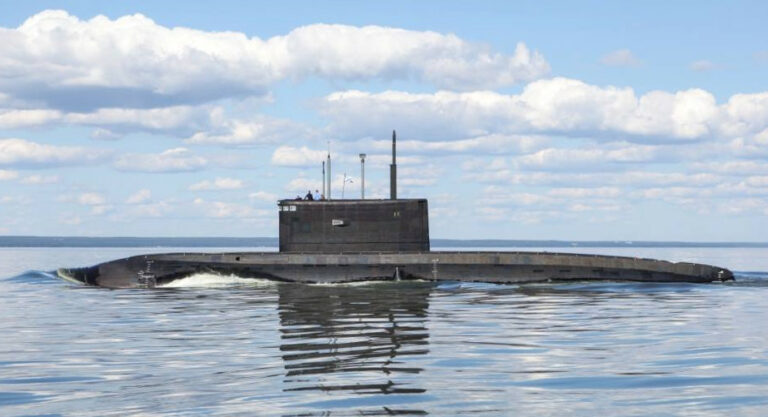Unlike the United States Navy, which went all-in on nuclear power, Russia maintains fleets of both diesel and nuclear-powered submarines. A land power encompassing much of Eurasia, Russian submarines are based much closer to “the action” than American submarines are. While Russia maintains nuclear submarines for distant ocean patrols, its fleet of diesel submarines is more than adequate for conflicts in Europe, the Middle East, and the Russian near abroad.
The mainstay of the Russian Navy’s conventionally powered fleet are Project 877–class submarines, known as the Kilo class to NATO and the West. Nicknamed the “Black Hole” submarine by the U.S. Navy, the Improved Kilos are extremely quiet. The class has been built more or less continuously for thirty years, a testament to their effectiveness at sea.
The Kilo class was originally meant to serve the navies of the Warsaw Pact countries, replacing older Whiskey- and Foxtrot-class boats. The sub measures just 238 feet long by thirty-two feet wide, and displace 3,076 tons submerged. The ship has a crew of just twelve officers and forty-one enlisted men and has an endurance of forty-five days before needing to be resupplied.
The ships are powered by two diesel generators and an electric drive, giving them enough power to make ten knots at the surface and seventeen knots underwater. They are not fast submarines. They have a range of six thousand to 7,500 nautical miles, meaning that from the Russian Northern Fleet headquarters, they can patrol for one thousand nautical miles and then go on to Cuba.
Neither are they particularly deep divers. According to Combat Fleets of the World, the Kilo-class normally dives to just 787 feet, with a maximum diving depth of 984 feet. The submarines do particularly well in shallow water, where a pair of ducted props powered by low-speed motoring motors likely allows it to operate closer to the sea floor.
A lot of silencing went into the Kilos. The hull is described as having the approximate shape of a drop of water and greatly reducing water resistance over older, World War II–era submarine designs. The propulsion plant is isolated on a rubber base so it doesn’t touch the hull, preventing vibrations from turning into noise that can be heard outside the boat. The ship has a rubbery anechoic coating to deaden noise emanating from the submarine, which occasionally gives the submarines a blocky appearance noticeable in photographs. The air regeneration system can keep the crew supplied with oxygen for up to 260 hours, giving the ship almost two weeks’ worth of underwater endurance.
more at nationalinterest.org
Ask me anything
Explore related questions





